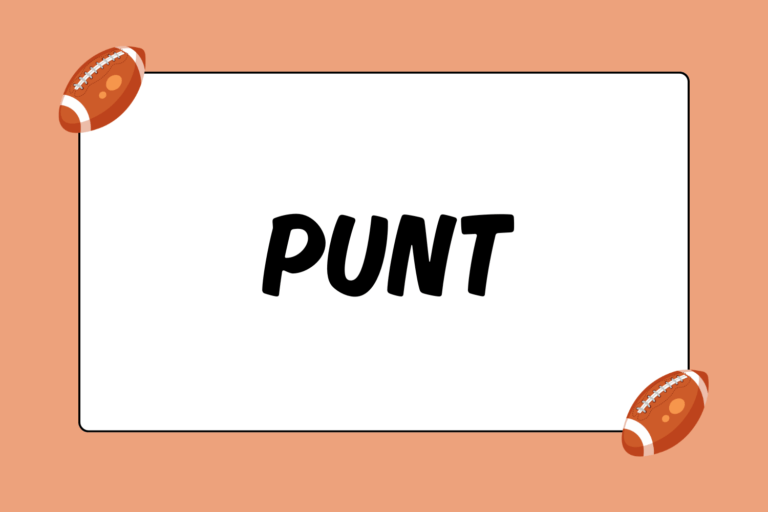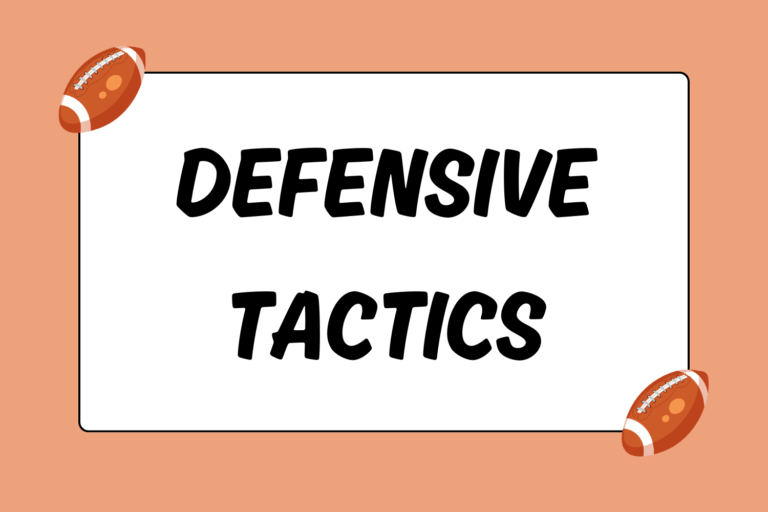On the defensive side of the ball, no skill or ability is more important than being able to tackle the ball carrier. Other skills like reading the play and getting past linemen are important, but to stop the offense from advancing the ball, a tackle will be required nearly all of the time. Unfortunately for defenders, most ball carriers don’t simply stand around and wait to be tackled. They usually run away, mostly along a path predetermined by the play that was called, but also in a direction that helps them avoid defenders. When this happens, defensive players must chase them down before attempting a tackle.
To put themselves in the right place to make such a tackle, defenders must first determine the proper Angle of Pursuit, or the exact path they should run so they will intersect the ball carrier’s path as quickly as possible. This guide describes the process of determining the correct angle of pursuit.
Angle of Pursuit Defined
Very basically, the angle of pursuit is the direction that a defensive player would have to run in order to intercept and tackle the ball carrier as quickly as possible, with the ball carrier gaining as few yards as possible. Tackling is still the most important skill for defensive players, but the better you are at determining the angle of pursuit, the easier it will be to make a tackle.
Obviously, you want to get to the ball carrier as quickly as possible, but you also want to be in the position to make a tackle when you do. Letting the ball carrier gain a couple of extra yards so you’re in a better tackling position is a reasonable sacrifice to make; if your angle of pursuit is too shallow, it greatly decreases the odds that you’ll be able to stop the ball carrier.
Determining the Angle of Pursuit
There are two main factors to take into account when figuring out the right angle of pursuit: your speed and the path of the ball carrier. Obviously, if the ball carrier is coming right at you, or is only a few feet in front of you, gauging the angle of pursuit isn’t all that important. But when there’s a good bit of distance between you and the ball carrier – when you have to chase him down – it becomes much more crucial. Here are the two main steps in determining the angle of pursuit:
Step 1: Know Yourself
Have a realistic and objective understanding of your tackling abilities, as well as how your speed and agility compares to those of the ball carrier. Slower players will need to use a wider angle of pursuit when going after the ball carrier, while faster players can afford to run at a shallower angle.
Step 2: Read the Situation
You’ll have to quickly absorb and interpret a lot of information when figuring out the right path to intercept the ball carrier. Here are a few examples of things to consider:
- The distance between you and your target
- The number of other defensive players in the vicinity
- The ball carrier’s proximity to the sideline
- How wide the ball carrier’s path seems to be
All of these factors, and several others, should play a part in helping you determine the proper angle of pursuit.
Executing the Angle of Pursuit
After you calculate the angle that you’ll take to approach the ball carrier, you have to put it to the test. Basically, this means running along the path you think will get you in front of the ball carrier in order to make a tackle. There are several things to keep in mind that will increase the odds you’ll be able to make a tackle at the end of your pursuit path:
- Force the ball carrier outside: A shallow angle of pursuit will make it easier for the ball carrier to get around you, depending on the distance between you two. Making sure that your angle of pursuit forces him outside you as much as possible will decrease the space between you and the sideline. Should the ball carrier cut back inside you, most likely he’ll run into some of your teammates anyway.
- The sideline is your friend: Another useful product of forcing the ball carrier outside is that it gets him much closer to the sideline. Use this to your advantage; even if you don’t get there in time to cleanly execute a tackle, pushing the ball carrier into the sideline and out of bounds works just as well.
- Watch the core: The human eye is naturally attracted to movement, and more often than not the ball carrier’s arms, legs, and head are moving more than his midsection. Overcome the instinct to look at those parts that are moving around and focus on the ball carrier’s core, or midsection area. The core doesn’t move around nearly as much, and it always tells you where the ball carrier is going.
It’s unlikely that your angle of pursuit will work perfectly every time. If there’s enough time you can adjust your angle en route to the ball carrier, but don’t get in the habit of changing it on the fly. Also, a late tackle is better than no tackle. Even if your angle of pursuit allows the ball carrier to gain several yards before you tackle him, it’s better than missing him completely.
Practice Makes Perfect
As with any skill, it will take some time before the ability to determine and execute the proper angle of pursuit becomes part of your natural instincts. No player in the history of the game has made every tackle he’s attempted, so don’t worry about being perfect. Focus on learning how to judge your speed against that of the ball carrier, and recognizing how your position in relation to the ball carrier impacts the path you should run. Eventually, you’ll get to the point where you can just react to the situation and let your intuition take over.





